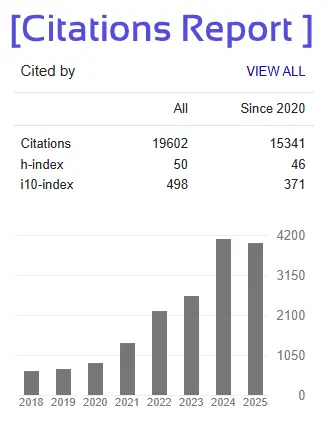Adsorption Of Arsenic And Phosphate Onto The Surface Of Calcite As Revealed By Batch Experiments And Surface Complexation Modelling
Ashfaque Alam, Mr.Abhishek Kr Upadayay (Asst.Professor)
M.Tech , Environmental Engineering Department, Mewar University Chittorgarh, Rajasthan
ABSTRACT
The adsorption of phosphate, arsenate (As(V)) and arsenite (As(III)) onto synthetic calcite was studied in a series of batch experiments. The adsorption of the three ions was studied separately followed by studies of the competition between arsenate and phosphate. The experimental data was utilized to set up models for sorption of arsenate and phosphate onto calcite. This was done to enhance the understanding of the governing processes controlling adsorption as well as to develop a tool to predict the fate of arsenate and phosphate in a
calcareous environment. The adsorption was studied in eleven different calcite-equilibrated solutions that
varied in pH, PCO2, ionic strength and activity of Ca2+, CO3 2- and HCO3 -. To avoid the precipitation of phosphate or arsenic-containing minerals the experiments were conducted using a short reaction time (generally 3 h) and a low concentration of phosphate (≤ 50 μM) and arsenic (≤ 33 μM).The results show that little or no arsenite adsorbs onto calcite within 24 h at initial arsenite concentration of 0.67 μM. In contrast, both arsenate and phosphate adsorbs readily and quickly onto calcite, with arsenate adsorbing faster than phosphate (adsorption is complete after 1 and 2-3 hours, respectively). Also desorption is fast and complete for both ions within 0.5 h. The reversibility of the sorption process indicates that neither arsenate nor phosphate is readily incorporated into the calcite crystal lattice under our experimental conditions.
The phosphate adsorption affinity for calcite is greater as compared to arsenate and the phosphate sorption isotherms are more strongly curved. However, the amount of both arsenate and phosphate adsorbed varied with the solution composition in the same manner. In particular, adsorption increased as the CO3 activity decreased (at constant pH) and as pH increased (at constant CO3 activity). The dependency on the carbonate activity indicates competition for sorption sites between carbonate and arsenate/phosphate, whereas the pH
dependency is likely a response to changes in arsenate and phosphate speciation.







